In the ever-evolving landscape of kitchen appliances, the contact grill has emerged as a favorite among consumers seeking convenience and quality in their cooking experiences. This compact and versatile cooking appliance has found its way into homes across the globe, particularly in Europe and the USA, where it has garnered a significant market share. As we delve into the dynamics of this market, it becomes clear that it’s not just about the grill itself; it’s about the innovations, the consumer behaviors, and the strategic retail approaches that drive its success. Join us as we explore the key players, technological advancements, consumer segmentation, distribution channels, and the challenges and opportunities that shape the contact grill market.
Introduction to Contact Grill Market Dynamics
The contact grill market has experienced a surge in popularity, becoming a staple in many modern kitchens around the world. This section delves into the dynamic nature of this market, exploring the factors that have propelled its growth and the trends that are shaping its future.
Consumer demand for convenience and healthier cooking methods has been a significant driver in the contact grill market. As health consciousness grows, consumers are seeking alternatives to traditional grilling methods that may involve higher levels of fat and smoke. Contact grills offer a solution by providing a quicker and potentially healthier cooking experience.
The market for contact grills has seen a remarkable expansion, particularly in regions like North America and Europe. In the United States, the market has been bolstered by the rise of outdoor cooking enthusiasts and the increasing popularity of grilling as a year-round activity, not just a seasonal pastime. In Europe, the market has been influenced by the trend towards healthier eating habits and the preference for low-fat cooking methods.
Innovation has played a crucial role in the evolution of contact grills. Manufacturers have been quick to introduce new features and functionalities that cater to consumer needs. These include adjustable temperature controls, non-stick surfaces, and even built-in temperature probes for precise cooking. The integration of smart technology, such as Bluetooth connectivity for remote monitoring, has also become a standard feature in many high-end models.
Despite the growth, the contact grill market is not without its challenges. Competition from other cooking appliances, such as indoor grills and outdoor smokers, remains fierce. Additionally, the market is susceptible to fluctuations in consumer preferences and economic conditions. Manufacturers must remain agile to adapt to these changing dynamics.
Distribution channels have also undergone a transformation. Online sales have become a significant part of the market, with e-commerce platforms offering a wide range of contact grills and competitive pricing. Retailers, both physical and online, are constantly looking for ways to differentiate their offerings to attract customers.
One of the key trends in the contact grill market is the segmentation of consumers. There is a clear distinction between casual home cooks and professional chefs, each with their own set of needs and expectations. Manufacturers are responding by creating products that cater to both segments, from compact, budget-friendly models for home use to heavy-duty, commercial-grade units for restaurants.
The market for contact grills is also influenced by regulatory changes and certifications. As consumers become more aware of the environmental impact of their purchases, there is a growing demand for appliances that are energy-efficient and sustainable. Manufacturers must navigate these regulatory landscapes while also ensuring their products meet the highest safety standards.
In conclusion, the contact grill market is characterized by rapid innovation, shifting consumer preferences, and evolving distribution channels. As manufacturers continue to push the boundaries of what contact grills can do, the market is poised for further growth. The key to success will lie in understanding and anticipating these market dynamics, and in delivering products that meet the needs of a diverse consumer base.
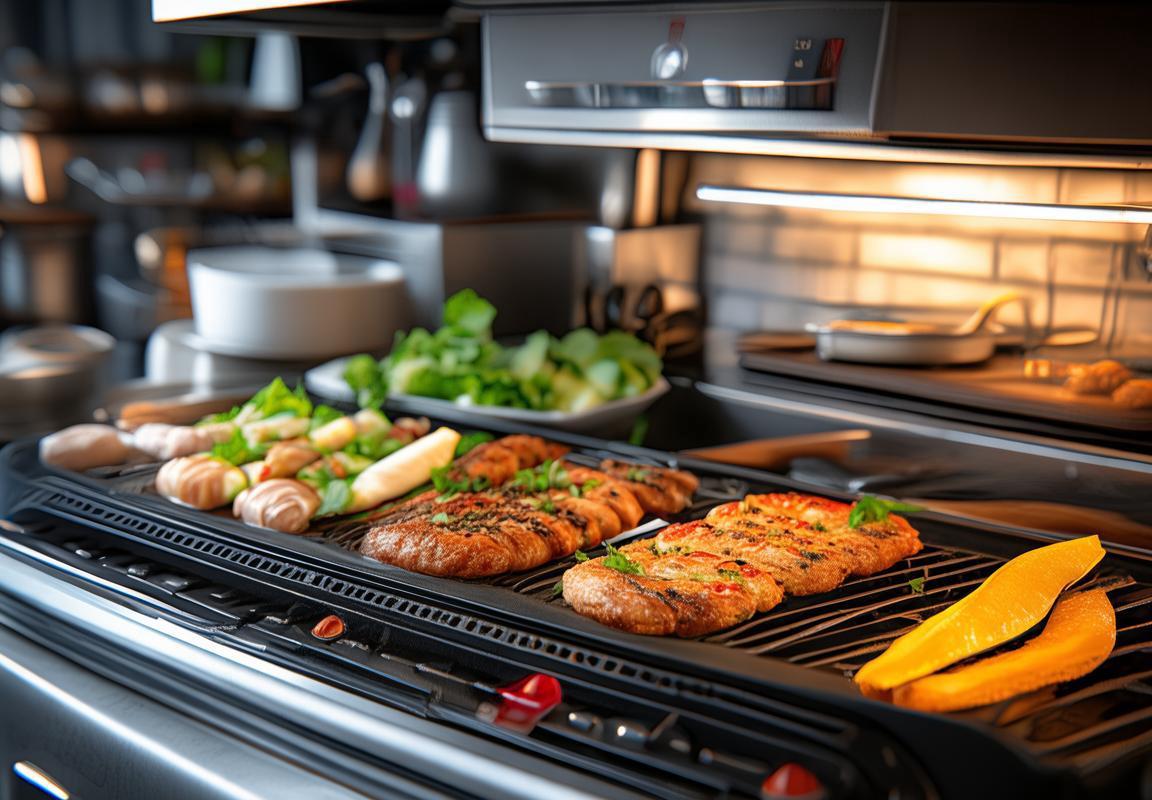
Market Overview in Europe and the USA
The Contact Grill Market in the United States has witnessed a significant surge in popularity, driven by a growing interest in outdoor cooking and health-conscious consumer trends. With a robust sales growth rate, the market is expected to reach a substantial value by 2027, reflecting a compounded annual growth rate (CAGR) of around 5.5%. Key factors fueling this growth include the increasing demand for low-fat and high-protein cooking methods, as well as the convenience and efficiency of contact grills. Brands like George Foreman and Cuisinart have become household names, offering a variety of models that cater to different cooking styles and preferences.
In Europe, the contact grill market is equally dynamic, though it has a slightly different consumer base. The market is segmented by country, with Germany, France, and the UK leading the way in terms of sales. The European market is expected to grow at a CAGR of approximately 4.2% over the same forecast period. European consumers are particularly interested in contact grills that offer versatility, such as those with adjustable heat settings and removable cooking surfaces. The market is also seeing a rise in electric contact grills, which are preferred for their ease of use and consistent cooking results.
The U.S. contact grill market is characterized by a diverse range of products, with a significant focus on innovation. Consumers are not only looking for grills that can cook a variety of foods but also for those that can be easily cleaned and maintained. The demand for high-quality materials and durable construction is high, with stainless steel being a popular choice. Additionally, the market is witnessing a trend towards compact and portable grills, which are favored by individuals with limited kitchen space or those who enjoy outdoor activities.
In Europe, there is a growing interest in contact grills that can be used indoors as well as outdoors. This dual-purpose appeal is particularly strong in urban areas where space is at a premium. The market is also being influenced by health and wellness trends, with consumers seeking grills that can cook food with minimal oil, thus promoting healthier eating habits. European manufacturers are responding to these demands by offering a range of contact grills with non-stick surfaces and precise temperature controls.
Despite the differences in consumer preferences, both regions share a common challenge: the need for energy-efficient appliances. As environmental concerns become more prevalent, manufacturers are under pressure to produce contact grills that consume less electricity while maintaining performance. This focus on sustainability is not only beneficial for the environment but also for consumers who are increasingly looking for eco-friendly products.
The competitive landscape in both the U.S. and Europe is marked by a mix of established brands and emerging players. Established players often have a strong presence due to their brand recognition and product innovation. However, the market is also seeing new entrants bringing fresh ideas and technologies to the table. This competition is driving innovation and pushing the boundaries of what contact grills can offer.
In the U.S., there is a significant emphasis on the convenience factor, with many consumers seeking grills that can quickly and easily switch between different cooking modes, such as grilling, searing, and pan-frying. The ability to cook a variety of foods in one appliance is a key selling point, and manufacturers are responding by offering multifunctional contact grills that can handle a wide range of recipes.
In Europe, there is a strong focus on the quality of the cooking experience. Consumers are willing to invest in high-quality contact grills that deliver consistent and delicious results. This focus on quality is reflected in the premium pricing of some models, which are seen as a worthwhile investment for those who value culinary excellence.
As the contact grill market continues to evolve, it is clear that consumer preferences are shifting towards healthier, more convenient, and environmentally friendly cooking solutions. Both the U.S. and European markets are responding to these changes, with manufacturers focusing on innovation, sustainability, and the delivery of exceptional cooking experiences.
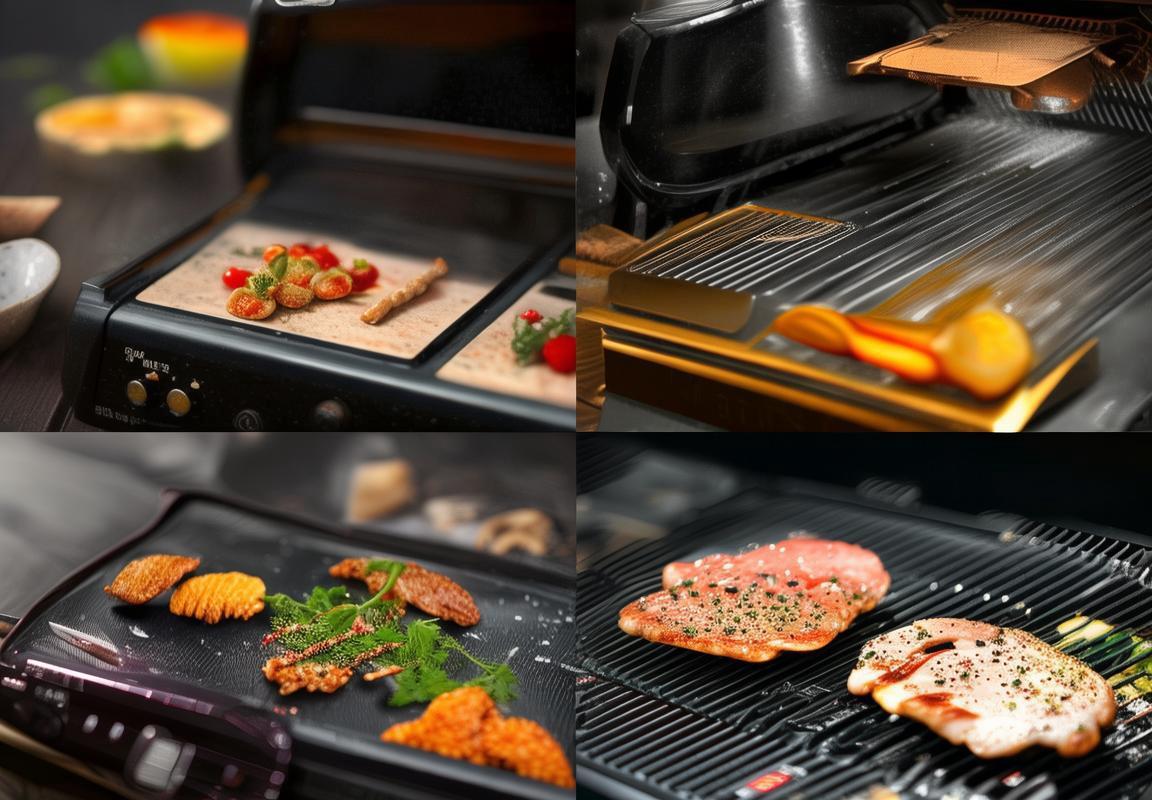
Key Players in the Contact Grill Industry
In the bustling world of contact grill manufacturing, several key players have emerged as industry leaders, each bringing their unique strengths and innovations to the market. From established brands with decades of experience to newer entrants with cutting-edge technology, these companies are shaping the future of outdoor cooking.
German Engineering Prowess with WeberWeber has been a household name in the grilling industry for over 60 years. Known for their high-quality, durable contact grills, Weber has a strong presence in both Europe and the USA. Their commitment to German engineering has resulted in a range of products that cater to both casual and professional chefs.
Innovative Designs from Napoleon GrillsNapoleon Grills, a Canadian company, has made a name for itself with its innovative designs and user-friendly features. Their contact grills are not only stylish but also packed with features that enhance the grilling experience. Napoleon’s focus on customer satisfaction has helped them carve out a niche in the market.
Breville’s Australian Touch in the MarketBreville, an Australian brand, has made a significant impact with its sleek and modern approach to contact grills. Known for their kitchen appliances, Breville’s contact grills are a testament to their design aesthetic and functionality. Their products are popular among consumers who value both form and function.
The Japanese Precision of Sunbeam AppliancesSunbeam, a Japanese company, brings precision engineering to the contact grill market with their range of appliances. Their grills are known for their even heating and precise temperature control, making them a favorite among culinary enthusiasts. Sunbeam’s dedication to quality has earned them a loyal customer base.
Italian Craftsmanship with Rösle GrillsRösle, an Italian brand, combines traditional craftsmanship with modern technology to create premium contact grills. Their attention to detail and commitment to excellence is evident in their products, which are often sought after by professionals and passionate home cooks alike.
American Innovation with Char-Broil GrillsChar-Broil, an American company, has been a leader in outdoor cooking for over 70 years. Their contact grills are known for their affordability and reliability. Char-Broil’s continuous innovation ensures that they remain competitive in the market, offering a variety of options to suit different grilling preferences.
French Elegance in Cooking with ThermomixWhile not traditionally known for grills, Thermomix, a French brand, has entered the contact grill market with their stylish and versatile appliances. Their grills are designed to be used both indoors and outdoors, appealing to those who appreciate the elegance of French cuisine and kitchen appliances.
Asian Market Leader with Osaka GrillOsaka Grill, a Japanese company, has gained a significant market share in Asia with their efficient and easy-to-use contact grills. Their products are known for their affordability and durability, making them a popular choice among budget-conscious consumers.
Global Reach with George Foreman GrillsGeorge Foreman Grills, a brand with a strong global presence, offers a range of contact grills that are simple to use and maintain. Their commitment to healthy cooking and their iconic design have made George Foreman Grills a go-to choice for many consumers around the world.
As the contact grill industry continues to evolve, these key players are not only competing with each other but also with the changing demands of consumers. Whether it’s through technological advancements, design innovations, or strategic partnerships, these companies are at the forefront of shaping the future of outdoor cooking experiences.
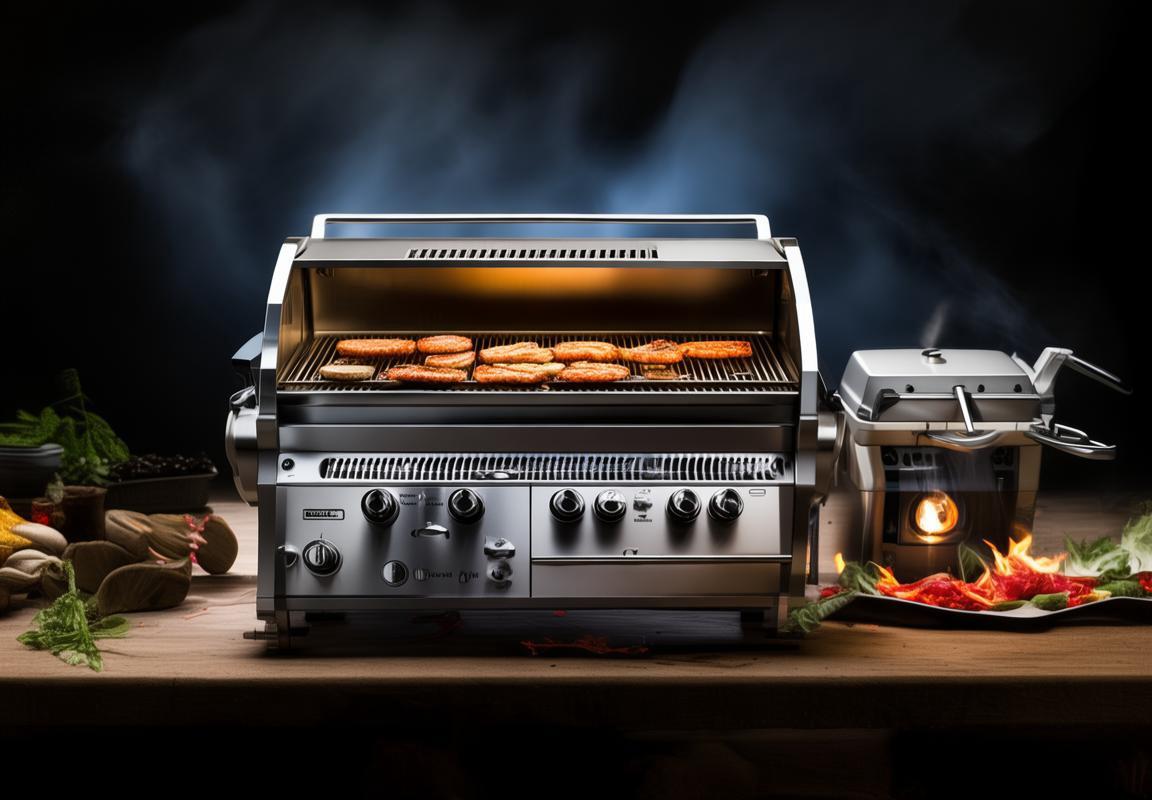
Technological Advancements in Contact Grills
The landscape of contact grills has seen a remarkable transformation with the integration of cutting-edge technologies. These advancements not only enhance the cooking experience but also cater to the evolving demands of consumers. Here’s a glimpse into some of the significant technological breakthroughs shaping the contact grill industry.
Grill Plates and Heat DistributionModern contact grills often feature advanced grill plates made from high-quality materials like stainless steel or ceramic. These materials are durable and provide even heat distribution, ensuring that food is cooked uniformly. The design of these plates has evolved to include grooves and channels that trap grease and prevent flare-ups, making for healthier cooking.
Smart Cooking TechnologyThe introduction of smart cooking technology has revolutionized the contact grill market. Many high-end models now come with built-in digital displays and programmable settings, allowing users to control temperature, cooking time, and even the specific type of food being grilled. This technology provides users with the convenience of hands-off cooking, ensuring perfect results every time.
Sous-Vide IntegrationSous-vide cooking has gained popularity for its ability to achieve precise temperature control and tender, flavorful results. Some contact grill manufacturers have integrated sous-vide functionality into their products, allowing users to vacuum-seal their food and cook it at a precise temperature for an extended period. This combination of sous-vide and contact grilling offers the best of both worlds, with the convenience of contact grilling and the precision of sous-vide.
Safety FeaturesSafety has always been a priority in kitchen appliances, and contact grills are no exception. Recent technological advancements include features like automatic shut-off, which turns off the grill after a certain period of inactivity, reducing the risk of fire. Additionally, some models now come with cool-touch handles and surfaces, ensuring that users can safely handle the grill even when it’s in use.
Energy EfficiencyEnergy efficiency has become a crucial factor in the appliance market, and contact grills are no different. Manufacturers have developed more energy-efficient heating elements that reduce energy consumption without compromising on cooking performance. These improvements not only save users money on their energy bills but also contribute to a greener, more sustainable environment.
Cooking Modes and VersatilityContact grills have traditionally been used for grilling, but technological advancements have expanded their versatility. Many models now offer a variety of cooking modes, including searing, baking, and even toasting. This versatility allows users to prepare a wide range of dishes, from steaks and burgers to sandwiches and pizzas, all on the same appliance.
Touchscreen InterfaceThe user interface has also seen significant improvements. Modern contact grills often feature intuitive touchscreen interfaces that make it easy for users to navigate through different settings and modes. This sleek design not only adds a touch of sophistication to the appliance but also makes it more accessible for users of all ages and cooking abilities.
Health and WellnessWith a growing emphasis on health and wellness, contact grill manufacturers have introduced features that cater to these needs. Non-stick surfaces reduce the need for excessive oil, making the grilling process healthier. Some models even come with adjustable heat settings that allow users to cook at lower temperatures, which can help retain more nutrients in the food.
Maintenance and CleaningThe ease of maintenance and cleaning is another area where technology has made significant strides. Many contact grill models now feature removable and dishwasher-safe parts, making cleaning a breeze. The use of non-stick materials and self-cleaning modes further simplifies the post-cooking process.
In conclusion, the technological advancements in contact grills have expanded their capabilities, making them more versatile, user-friendly, and health-conscious. As technology continues to evolve, we can expect to see even more innovative features that enhance the overall cooking experience.
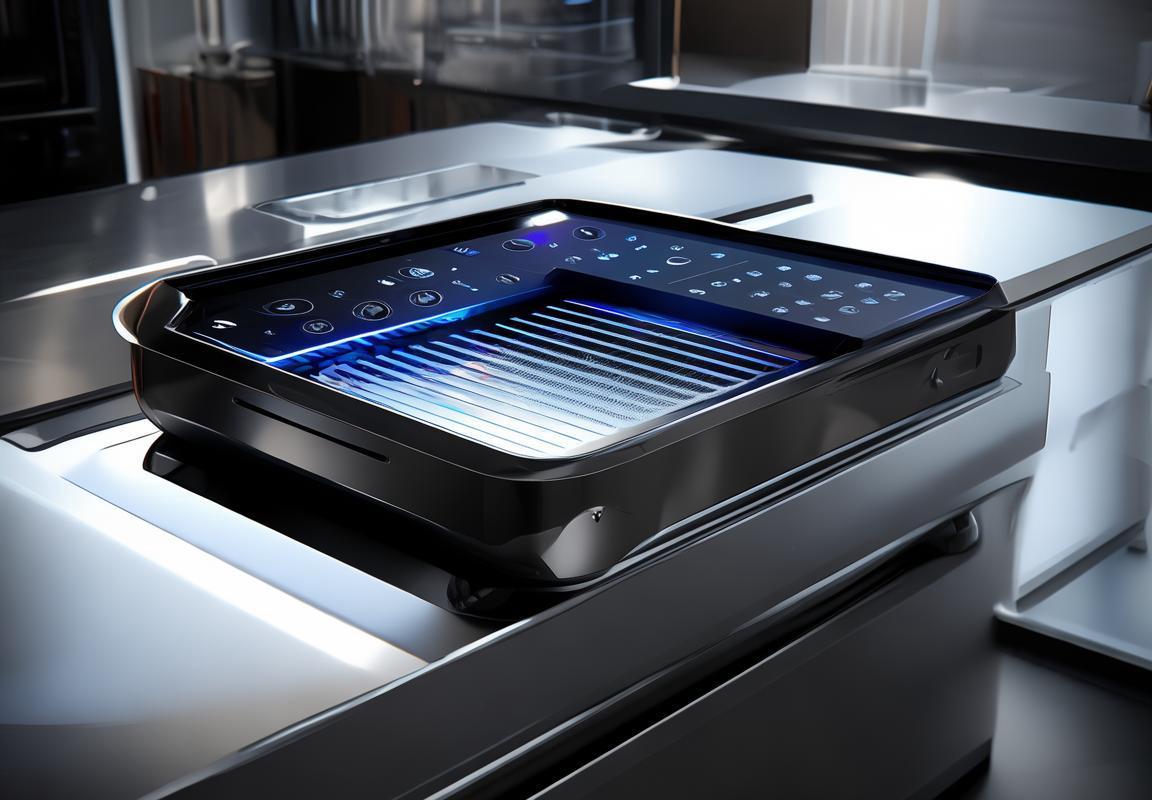
Consumer Behavior and Market Segmentation
Understanding the Contact Grill Consumer
Grill enthusiasts and casual cooks alike have been increasingly drawn to contact grills for their convenience and versatility. The consumer base for contact grills spans a broad demographic, with distinct preferences and usage patterns.
Embracing Healthier Cooking
One notable trend in consumer behavior is the growing demand for healthier cooking options. Contact grills offer a healthier alternative to traditional grilling methods, as they can reduce the need for additional fats and oils. Consumers who are health-conscious and looking to minimize their intake of unhealthy fats are turning to contact grills as a solution.
The Convenience Factor
Convenience is a key driver in the contact grill market. Busy lifestyles and the desire for quick and easy meal preparation have led many consumers to seek appliances that can cook a variety of foods efficiently. The compact size and quick heating times of contact grills make them a favorite among those who value time-saving features.
Technology Integration and Smart Cooking
As technology continues to evolve, so does the consumer’s expectation for smart appliances. Contact grill manufacturers have responded by integrating features such as digital temperature control, LED displays, and programmable settings. These advancements cater to consumers who enjoy the convenience of smart cooking and the ability to customize their grilling experience.
Seasonal Preferences and Occasional Use
Consumers often purchase contact grills based on seasonal needs or for occasional use. The summer months see a surge in demand as people look to enjoy outdoor grilling, while others might buy contact grills for specific events or holidays. This seasonal variation in demand affects how consumers interact with the product and what features they prioritize.
Cooking Styles and Preferences
The diverse range of cooking styles and preferences among consumers is reflected in the variety of contact grills available. From those who prefer a sear-like texture to those who are looking for a more even cooking surface, there’s a contact grill to match every taste. Consumers who enjoy a variety of cooking methods, such as grilling, pan-frying, and sautéing, often seek a contact grill that can adapt to these diverse needs.
Brand Loyalty and Word-of-Mouth
Brand loyalty and word-of-mouth play a significant role in the contact grill market. Consumers who are satisfied with their purchase are likely to recommend the brand to friends and family. Brands that have established a reputation for quality, durability, and innovative features often see a loyal customer base that contributes to their market share.
Affordability and Price Sensitivity
Price sensitivity is a factor that cannot be overlooked. While some consumers are willing to invest in high-end models with advanced features, others may be more price-conscious. The market offers a wide range of contact grills, from budget-friendly options to premium models, allowing consumers to choose based on their budget and desired features.
Inclusivity and Accessibility
The contact grill market is also characterized by its inclusivity, offering products that cater to different cooking abilities and preferences. From beginners to seasoned chefs, there’s a contact grill designed to fit various skill levels. This inclusivity ensures that a broad audience can enjoy the benefits of contact grilling without feeling overwhelmed by complex cooking techniques.
Marketing and Promotion Strategies
How brands market and promote their contact grills also influences consumer behavior. Influencer partnerships, social media campaigns, and cooking demonstrations have become popular strategies to reach consumers. By showcasing the ease of use, health benefits, and versatility of contact grills, manufacturers can effectively communicate the value proposition to potential buyers.
In summary, consumer behavior in the contact grill market is shaped by a combination of health consciousness, convenience, technology integration, and personal preferences. Understanding these dynamics allows manufacturers to tailor their products and marketing strategies to meet the diverse needs and desires of their target audience.

Distribution Channels and Retail Strategies
In the ever-evolving landscape of kitchen appliances, the distribution channels and retail strategies employed by manufacturers play a crucial role in reaching consumers effectively. Here’s a glimpse into how these channels shape the market for contact grills.
The Rise of Online MarketplacesE-commerce platforms have become the go-to destinations for consumers seeking convenience and a wide range of products. Online marketplaces like Amazon, Walmart, and eBay have seen a surge in contact grill sales, offering a vast selection and competitive pricing.
In-store Experience and Personal TouchDespite the dominance of online sales, brick-and-mortar stores still hold significant sway. Retailers like Best Buy and Home Depot provide customers with the opportunity to touch and feel products, which can be a deciding factor for those who prefer a tactile shopping experience.
Direct-to-Consumer (DTC) InitiativesMany contact grill manufacturers have embraced the DTC model, cutting out the middleman to offer consumers direct access to their products. This approach allows for better customer relationships, personalized marketing, and often, more competitive pricing.
Strategic Partnerships with Home Improvement StoresHome improvement retailers, such as Lowe’s and Home Depot, have become key partners for contact grill manufacturers. These stores offer a platform for showcasing high-quality grills to customers who are actively looking to upgrade their kitchen appliances.
Pop-Up Stores and EventsBrands are increasingly using pop-up stores and events to create a buzz around their contact grills. These temporary shops provide an immersive experience where customers can see, touch, and even try out the products before making a purchase.
Exclusive Retailer AgreementsSome manufacturers have entered into exclusive agreements with specific retailers, which can help them maintain a consistent brand image and product availability. This strategy also ensures that the retailer invests in marketing and training staff to provide the best customer service.
The Role of Social Media InfluencersSocial media influencers have become a powerful force in the kitchen appliance market. Collaborations with influencers can significantly boost brand visibility and credibility, especially among younger consumers who are highly influenced by online reviews and endorsements.
Cross-Selling and Upselling TechniquesRetailers often use cross-selling and upselling techniques to increase sales. For instance, a customer interested in a basic contact grill might be prompted to consider a model with additional features or a set that includes accessories like grill mats or spatulas.
Customer Loyalty ProgramsTo foster repeat business, many retailers and manufacturers have introduced loyalty programs. These programs offer rewards, discounts, and special offers to customers who purchase contact grills or related products, encouraging brand loyalty.
Seasonal Promotions and Sales EventsRetailers capitalize on seasonal trends by hosting sales events and promotions. For example, summer months see an increase in grill-related sales, and retailers may offer discounts or bundle deals to entice customers to purchase contact grills.
The Importance of After-Sales ServiceA robust after-sales service network is crucial for maintaining customer satisfaction. Retailers and manufacturers often provide installation assistance, warranty support, and customer service hotlines to ensure that customers have a positive experience from purchase to post-purchase care.
In summary, the distribution channels and retail strategies for contact grills are diverse and multifaceted. By leveraging online platforms, establishing partnerships with key retailers, and focusing on customer experience, manufacturers can effectively navigate the competitive landscape and capture a larger share of the market.

Challenges and Opportunities
The competitive landscape of the contact grill industry is rife with challenges and opportunities that manufacturers and retailers must navigate. From market saturation to technological breakthroughs, here’s a closer look at the multifaceted nature of these challenges and opportunities.
The rise of e-commerce has democratized access to contact grills, allowing smaller brands to compete with established players. However, this increased competition can lead to price wars, eroding profit margins. Brands must find innovative ways to differentiate themselves online, whether through unique features, superior customer service, or targeted marketing campaigns.
Consumer health consciousness is on the rise, with a growing preference for outdoor cooking methods that minimize oil usage. This trend presents an opportunity for contact grill manufacturers to develop healthier cooking options. By emphasizing low-fat cooking capabilities and promoting the health benefits, these brands can tap into a niche market segment.
Environmental concerns are shaping the contact grill industry. There’s a growing demand for sustainable and eco-friendly products. Manufacturers that can adapt by using recycled materials or reducing their carbon footprint may find a competitive edge. This shift could also lead to new regulations and standards, requiring companies to invest in research and development to meet these requirements.
The integration of smart technology in contact grills is another opportunity. With the rise of the Internet of Things (IoT), consumers are increasingly looking for smart appliances that can be controlled remotely. This opens up possibilities for contact grill manufacturers to create apps that offer cooking guides, temperature control, and even social sharing features.
Despite the opportunities, there are significant challenges related to supply chain management. Global supply chains have been disrupted by events like the COVID-19 pandemic, leading to delays and increased costs. Brands must find ways to streamline their supply chains, perhaps by diversifying suppliers or investing in local production facilities.
Regulatory compliance is another hurdle. Different countries have varying standards for appliance safety and emissions. Navigating these regulations can be costly and time-consuming, but it’s essential for maintaining brand reputation and avoiding legal issues.
The rapid pace of technological innovation can be daunting. New products are constantly entering the market, and manufacturers must stay ahead of the curve to remain competitive. This requires significant investment in research and development, which can be risky and uncertain in terms of return on investment.
Consumer expectations are also evolving. Today’s consumers are more informed and have higher standards for customer service. Brands that fail to adapt to these changing expectations may lose market share. This means investing in customer relationship management systems and ensuring that customer feedback is used to improve products and services.
Market saturation is a challenge that affects both established and new entrants. With so many brands vying for attention, it’s hard to stand out. Brands must focus on creating a unique value proposition that resonates with their target audience. This could involve a focus on quality, innovation, or a specific segment of the market.
The rise of social media has changed the way consumers discover and purchase products. While this presents an opportunity for marketing and brand building, it also means that any negative feedback can spread quickly. Brands must cultivate a strong online presence and be prepared to manage their reputation effectively.
In conclusion, the contact grill industry is filled with challenges and opportunities. Manufacturers and retailers must be agile, innovative, and customer-centric to navigate these complexities successfully. By embracing technological advancements, focusing on sustainability, and understanding consumer behavior, brands can position themselves for long-term growth and success.

Case Studies: Successful Contact Grill Manufacturers
In the world of contact grill manufacturing, several companies have carved out a niche for themselves by offering innovative products and meeting the evolving demands of consumers. Here are a few case studies showcasing the success of some of these manufacturers:
-
Breville Barbecue GrillBreville, known for its high-quality kitchen appliances, has seen significant success with its barbecue grill line. The company’s commitment to durability and ease of use has made their contact grills a favorite among grill enthusiasts. Their focus on smart features, such as temperature control and non-stick surfaces, has not only improved cooking efficiency but also enhanced the overall consumer experience.
-
George Foreman GrillsThe George Foreman brand is synonymous with contact grilling. Their success lies in their iconic design, which provides even heat distribution and easy cleanup. By leveraging the reputation of their founder, a renowned boxer, George Foreman has created a brand that resonates with consumers looking for a healthy and convenient cooking option. Their strategic marketing campaigns and endorsements have further bolstered their market position.
-
Cuisinart GriddlerCuisinart has made a name for itself in the contact grill market with its versatile Griddler models. These grills can be used for a variety of cooking methods, including grilling, panini pressing, and even serving as a griddle. Cuisinart’s approach to market segmentation has allowed them to cater to a broad range of consumers, from families to single individuals. Their focus on innovation, such as the introduction of digital control panels, has kept them ahead of the competition.
-
Hamilton Beach Power GrillerHamilton Beach has capitalized on the convenience factor of contact grills with their Power Griller series. The brand has managed to attract price-sensitive consumers by offering a range of affordable yet effective grills. Their marketing strategy includes highlighting the ease of use and quick cooking times, which appeal to busy individuals and families seeking a quick and healthy meal option.
-
Oster GrillsOster has made a splash in the contact grill market with their sleek and modern designs. The brand has focused on creating grills that not only perform well but also look stylish in any kitchen. By offering a variety of sizes and features, Oster has been able to cater to different consumer preferences. Their emphasis on customer satisfaction and post-purchase support has helped build a loyal customer base.
-
Bertazzoni Contact GrillsItalian appliance brand Bertazzoni has brought a touch of luxury to the contact grill market. Their high-end grills are known for their premium materials and advanced technology. By targeting gourmet cooks and those who appreciate quality kitchenware, Bertazzoni has positioned itself as a premium choice in the market. Their marketing efforts often revolve around the gourmet aspect of cooking, appealing to consumers who value culinary excellence.
These case studies highlight the strategies that have led to the success of various contact grill manufacturers. From focusing on innovation and durability to embracing marketing tactics that resonate with different consumer segments, these companies have managed to stand out in a competitive market. Whether through brand partnerships, smart features, or design, each has found its unique path to success in the contact grill industry.
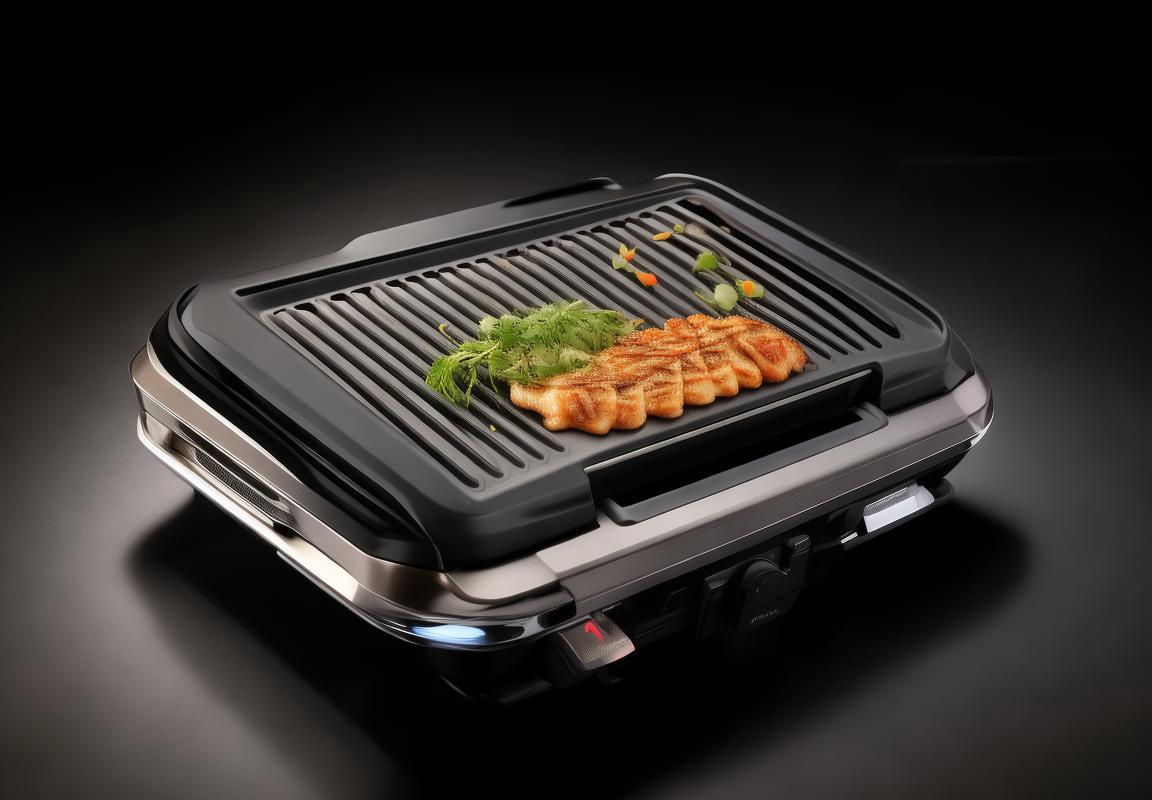
Future Outlook and Predictions
The contact grill market has seen a surge in innovation and consumer demand, offering both challenges and opportunities for manufacturers. Let’s delve into some case studies of successful contact grill manufacturers that have navigated these complexities and capitalized on market trends.
One such manufacturer is Weber-Stephen Products LLC, known for their classic kettle grills. They’ve expanded their product line to include contact grills, blending their expertise in outdoor cooking with the convenience of indoor grilling. Their success lies in their commitment to quality and their ability to cater to both casual and professional chefs.
Another standout is George Foreman, a brand synonymous with indoor grilling. They’ve managed to maintain their market position by continuously updating their contact grill models with new features, such as adjustable heat settings and non-stick surfaces. Their marketing strategy, which emphasizes health and convenience, has resonated with consumers looking for a healthier alternative to traditional cooking methods.
Breville, a company known for their high-quality kitchen appliances, has also found success in the contact grill market. Their contact grills are designed with sleek aesthetics and advanced technology, such as the Element IQ system, which ensures even heat distribution. Breville’s focus on innovation and design has attracted a niche market of consumers who value both form and function.
In the world of contact grills, it’s not just about the product itself but also the experience it offers. Hamilton Beach, for instance, has made a name for itself by creating user-friendly contact grills that are easy to clean and maintain. Their “CleanCoat Nonstick Surface” has become a selling point for those who prioritize convenience and ease of use.
One notable trend among successful contact grill manufacturers is the integration of smart technology. Cuisinart, for example, has introduced contact grills with built-in Bluetooth connectivity, allowing users to control their grill through their smartphones. This has opened up a new realm of possibilities, from remote temperature control to receiving cooking tips and recipes.
Another interesting case study is that of Instant Brands, the parent company of brands like Instant Pot. They’ve leveraged their expertise in multi-functional kitchen appliances to create a contact grill that can also be used as a sandwich press or a panini maker. This versatility has appealed to consumers who are looking for a versatile appliance that can handle various cooking tasks.
The success of these manufacturers can be attributed to several factors. They’ve focused on:
- Product Innovation: Continuously improving the design and functionality of their contact grills to meet evolving consumer needs.
- Quality and Reliability: Ensuring that their products are built to last and provide a superior cooking experience.
- Brand Positioning: Crafting a strong brand identity that resonates with their target audience.
- Marketing and Advertising: Using effective marketing strategies to reach and engage potential customers.
- Customer Feedback: Actively listening to customer feedback and making necessary adjustments to their products and services.
In conclusion, the contact grill market is a competitive landscape where success is often achieved through a combination of product excellence, strategic marketing, and a deep understanding of consumer behavior. These case studies highlight the diverse strategies that manufacturers have employed to stand out in the market, offering valuable insights for those looking to enter or thrive in this niche sector.

Conclusion
In reflecting on the journey of contact grills in the market, it’s clear that this appliance has evolved significantly. From the simple flat-top grills of the past to the sophisticated, feature-rich models of today, the industry has seen a remarkable transformation. Here are some key takeaways that underscore the impact and potential of contact grills moving forward.
The integration of smart technology has not only made contact grills more user-friendly but has also expanded their appeal to a broader audience. With features like temperature control, digital displays, and even Bluetooth connectivity, these grills are not just cooking tools but also technological marvels. This shift has opened doors for innovation and has set the stage for even more advanced features in the future.
Consumer preferences have played a pivotal role in shaping the market. The rise of health-conscious consumers has led to a demand for grills that offer healthier cooking options, such as reduced fat and calorie content. This has driven manufacturers to develop non-stick surfaces and low-fat cooking techniques, ensuring that the grills cater to the evolving dietary needs of consumers.
The distribution channels have also seen a transformation, with a notable shift towards online sales. The convenience of online shopping has made it easier for consumers to access a wide range of contact grills from the comfort of their homes. However, this shift has also presented challenges for retailers, who must adapt their strategies to compete in this new landscape.
Despite the challenges, the contact grill market continues to present opportunities. The growing interest in outdoor cooking and the increasing popularity of barbecuing have created a fertile ground for new product development. Manufacturers are exploring new materials, designs, and functionalities to keep up with the dynamic market demands.
In terms of market segmentation, the industry has become more nuanced. There are now distinct segments catering to casual home cooks, professional chefs, and even those with specific dietary requirements. This segmentation has allowed manufacturers to tailor their products and marketing strategies to meet the unique needs of each group.
Case studies of successful contact grill manufacturers reveal a common thread: a commitment to quality, innovation, and customer satisfaction. These companies have not only focused on the technical aspects of their products but have also paid close attention to the customer experience. Whether through exceptional customer service or innovative marketing campaigns, they have managed to stand out in a crowded market.
Looking ahead, the future of the contact grill market appears promising. Predictions suggest that the industry will continue to grow, driven by technological advancements, changing consumer behaviors, and new market segments. The integration of AI and IoT into contact grills could lead to even more personalized and efficient cooking experiences.
In conclusion, the contact grill market has come a long way. It has adapted to technological advancements, consumer preferences, and changing market dynamics. While challenges remain, the opportunities for growth and innovation are vast. As the industry continues to evolve, one thing is certain: the contact grill will remain a staple in the kitchen appliance landscape, offering convenience, health benefits, and culinary excitement to consumers around the world.